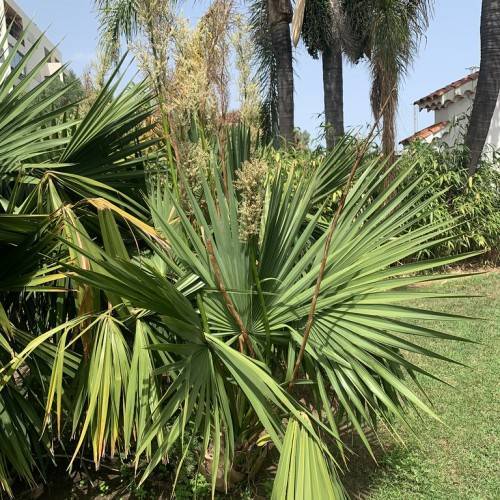
dwarf palmetto
Sabal minor
Cycle:
Perennial
Watering:
Average
Hardiness Zone:
7 - 10
Flowers:
Flowers
Sun:
Full sun,part shade
Fruits:
Fruits Ready In Fall
Leaf:
Yes
Growth Rate:
Low
Maintenance:
High
Salt Tolerant:
Yes
Thorny:
Yes
watering
The dwarf palmetto (Sabal minor) should be watered regularly, but not every day. Water the plant about 2-3 times per week and allow the top 2-3 inches of soil to dry out before watering again. During the warm summer months, the plant may require more frequent watering, up to 4 times per week. During the cooler winter months, the plant may require watering only once a week.
sunlight
Dwarf palmetto (Sabal minor) should receive full sunlight every day in order to thrive and grow, as this is a sun-loving species of plant. The best time of the day for sunlight is usually between 10 am and 3 pm, as the sun will be at its brightest and warmest during this period. During the rest of the day, these plants should receive at least 6-8 hours of bright sunlight. Avoiding direct exposure during hot, mid-day sun will help keep the plant healthy during the summer months.
pruning
Dwarf palmetto (Sabal minor) should be pruned in early spring, but only lightly. Pruning should take off dead branches and fronds, as well as any branches that have grown too close to the ground. This will help promote healthy air circulation and sunlight penetration. Most of the pruning should involve the lower branches, as the canopy of the tree should stay higher. How much to prune depends on how congested the tree has become; when pruning, always consider the overall shape of the tree. Do not take off more than 1-third of the tree’s height or width. Unless pruning to achieve a desired shape, it is best to leave the tree’s canopy at its natural shape.
